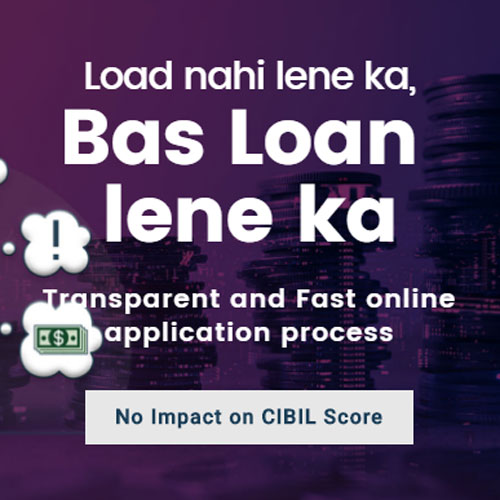Income Tax is a kind of tax that is imposed by the government directly on the annual income of an individual. Income tax is imposed on both earned and unearned income. Earned income includes salary, wage, etc., and unearned income includes interest, rent, etc. Every Indian citizen who earns an income have to pay income tax at the end of the financial year. The interest rate varies depending on the income tax slab.
Income Tax Slab
(Declared in the Budget for Financial Year 2018 – 2019) :
For Individuals and HUF (Age – Below 60 years) :
| Income Tax Slab | Tax Rate |
|---|---|
| Up to Rs.2,50,000 | NIL |
| Above Rs.2,50,000 and up to Rs.5,00,000 | 5% |
| Above Rs.5,00,000 and up to Rs.10,00,000 | 20% |
| Above Rs.10,00,000 | 30% |
*10% of tax will be taken as surcharge if total income is between Rs.50 Lakhs and Rs.1 crore.
*15% of tax will be taken paid as surcharge if total income is above Rs.1 crore.
For Individuals and HUF (Age – 60 years and above, but below 80 years) :
| Income Tax Slab | Tax Rate |
|---|---|
| Up to Rs.3,00,000 | NIL |
| Above Rs.3,00,000 and up to Rs.5,00,000 | 5% |
| Above Rs.5,00,000 and up to Rs.10,00,000 | 20% |
| Above Rs.10,00,000 | 30% |
*10% of tax will be taken as surcharge if total income is between Rs.50 Lakhs and Rs.1 crore.
*15% of tax will be taken as surcharge if total income is above Rs.1 crore.
For Super Senior Citizens (Age – 80 years and above) :
| Income Tax Slab | Tax Rate |
|---|---|
| Up to Rs.5,00,000 | NIL |
| Above Rs.5,00,000 and up to Rs.10,00,000 | 20% |
| Above Rs.10,00,000 | 30% |
*10% of tax will be taken as surcharge if total income is between Rs.50 Lakhs and Rs.1 crore.
*15% of tax will be taken as surcharge if total income is above Rs.1 crore.
Income Tax Slab (2016 – 2017) :
For Individuals and HUF (Age – Below 60 years) :
| Income Tax Slab | Tax Rate |
|---|---|
| Up to Rs.2,50,000 | NIL |
| Above Rs.2,50,000 and up to Rs.5,00,000 | 10% of the amount exceeding Rs.2,50,000 |
| Above Rs.5,00,000 and up to Rs.10,00,000 | 20% of the amount exceeding Rs.5,00,000 |
| Above Rs.10,00,000 | 30% of the amount exceeding Rs.10,00,000 |
*12% surcharge has to be paid if total income is more than Rs.1 crore.
For Senior Citizens (Age – 60 years and above, but below 80 years) :
| Income Tax Slab | Tax Rate |
|---|---|
| Up to Rs.3,00,000 | NIL |
| Above Rs.3,00,000 and up to Rs.5,00,000 | 10% |
| Above Rs.5,00,000 and up to Rs.10,00,000 | 20% |
| Above Rs.10,00,000 | 30% |
*12% surcharge has to be paid if total income is more than Rs.1 crore.
For Super Senior Citizens (Age – 80 years and above) :
| Income Tax Slab | Tax Rate |
|---|---|
| Up to Rs.5,00,000 | NIL |
| Above Rs.5,00,000 and up to Rs.10,00,000 | 20% |
| Above Rs.10,00,000 | 30% |
*12% surcharge has to be paid if total income is more than Rs.1 crore.
Filing an Income Tax Return – Is it Necessary?
Currently (as of 2018), is mandatory for one to file income tax return in India if the following conditions are applicable –
- If the gross total annual income (before deductions under 80C to 80U) is Rs. 2,50,000 (for ages less than 60 years), Rs. 3,00,000 (for ages 60 years but less than 80 years) and Rs. 5,00,000 (for ages 80 years and above)
- If it’s a company or firm, irrespective of the profit or loss made in a financial year
- If a tax refund needs to be claimed
- If a loss under a head of income needs to be carried forward
- If being a resident of India, one has an asset or financial interest in any entity located outside India
- If being a resident of India, one is a signing authority in a foreign account
- If one receives income derived from property held under a trust for charitable or religious purposes or a political party or a research association, news agency, educational or medical institution, trade union, a not for profit university or educational institution, a hospital, infrastructure debt fund, any authority, body or trust
- If one is applying for a loan or a visa
If an NRI derives any or all of his/her income through sources in India, that income is liable to be taxable in India, and income tax returns for the same will be necessary.
With the implementation of e-filing of Income Tax Return, the following cases will require an e-filing of Income Tax:
- In case a refund is required
- In case the gross total annual income exceeds Rs. 5,00,000
- In case an income tax refund is required
- ITR-3, 4,5,6,7 have to be mandatorily e-filed
Income Tax Return – Explanation on the Forms:
The various forms that are available for the purpose of income tax return have the following functionality –
| Form Name | Brief |
|---|---|
| ITR-1 | Otherwise known as SAHAJ deals with income of an individual with salary or pension or income from one house property or other sources (not including lotteries or race horses) |
| ITR-2 | Applicable for individuals or Hindu Undivided Families having any income other than ‘Profits and gains of business or profession’ |
| ITR-3 | Applicable for individuals or Hindu Undivided Families having income sources from ‘Profits and gains of business or profession’ |
| ITR-4S | Known as SUGAM, it is applicable to individuals and HUFs opting for presumptive taxation scheme under Section 44AD/44AE |
| ITR-4 | Applicable for an individual or a HUF carrying out a proprietary business or profession |
| ITR-5 | For entities being a firm, LLP, AOP, BOI, artificial juridical person, co-operative society and local authority. This, however, does not include trusts, political parties, institutions, colleges or entities who are required to file the return of income under Section 139(4A), 139 (4B), 139(4C) or 139(4B) |
| ITR-6 | Applicable to companies other than the ones which claim a deduction under section 11 |
| ITR-7 | Applicable to all entities who should furnish a return of income under Section 139(4A), 139 (4B), 139(4C) or 139(4B) |
| ITR-V | The acknowledgment form of filing a return of income |
How to File Income Tax Return Online? – E-filing of Income Tax Returns
Further to the different forms available for filing tax returns, there are a few things that become a prerequisite to filing for an income tax return online. They are –
- Bank statements
- Form 16
- Copy of the previous year’s return
Having the documents ready, the following steps need to be observed to allow for a smooth filing of income tax return online. The URL that needs to be followed is e-Filling
The steps further to that are –
- Registration – The Permanent Account Number (PAN) is the user ID
- Tax Credit Statement (Form 26AS) – This needs to be checked for the previous financial year. This will list all the taxes deducted that are actually deposited with the Income Tax Department.
- The Tax Deducted at Source (TDS) of Form 16 should tally with the ones in Form 26AS
- Tax Return for the current year – Under the ‘Download’ menu, click on Income Tax Return Forms and choose the current financial year. The appropriate ITR form should be downloaded. There is an option to complete the process on the portal itself, through the ‘Quick e-file ITR’ link
- Return Preparation Software – It is a spreadsheet that can be used through Microsoft Office, Open Office or other online spreadsheet applications and it should be filled in using the details from Form 16
- Find out the tax payable by clicking the ‘Calculate Tax’ tab. If applicable, pay the tax and fill in the details of the challan in the tax return
- Confirm all the information through the ‘Validate’ tab
- Generate an ‘XML file’ and save it on your local disk on the computer
- Upload Return – After selecting the current financial year in the ‘Upload Return’ link on the portal’s left-hand navigation area, select the XML file that had been saved earlier. There might be an option to digitally sign the file. In case you have a digital signature, choose ‘Yes’ else ‘No’
- ITR – V – If the process of filing has been completed successfully, the website will flash an appropriate message and you will be able to download the acknowledgment form, the ITR-V
- A printed copy of the ITR-V needs to be signed by you and sent to the Income Tax Department office nearest to you through normal or Speed Post within 120 days of filing the return
Apart from the official site operated by the Government of India, there are many private portals that allow the filing of returns and charge a specific fee depending upon the service level they offer.
Benefits of Filing Income Tax Return Online
Though it might be a tedious process to keep a track of every nifty detail needed in order to file the proper details for the Income Tax Return, it actually helps a lot when it is done in the earnest and ahead of time, preferably, online –
- Online filing of returns ends by July 31 or every financial year, and being a month or two in advance in filing the income tax returns actually ensures one encounters lesser traffic and the entire process goes much smoother.
- In case one has missed filing tax returns for the previous year, every additional day till July 31 increases the penal interest. Thus, filing a tax return in advance is very advisable.
- Creating a favorable financial history – Online filing of the income tax returns actually creates a history of your financial records with the tax department in a much faster and easier way. This history is favored by a lot of organizations, be it financial or otherwise, whom you might have a business relationship with in the future.
- Proof of financial record – Having an ITR-V form is always handy, since one can readily furnish the same as a proof for any kind of financial liability or be opening a line of credit.
How to e-File ITR offline?
To e-File ITR offline for 2018-2019, you have to
- Visit the website of the Income Tax Department of India and choose the option for e-filing.
- On selecting this option, you will be directed to another website where you can select the ITR form that is applicable to you.
- For 2018-2019, the IT Department has two utilities and you can download any one of them. These utilities are Excel Utility and Java Utility.
If you choose Excel Utility, then:
- After downloading the utility, open the file and fill the form.
- Validate the information, calculate the tax and click on Generate XML.
- Save the form and upload it on the e-filing website of the IT Department.
Once you have uploaded the form and attached all the documents, click on submit.
If you download JAVA utility, then:
- After downloading the utility, open it and click on ‘Prefill’.
- Enter User ID, Password, DOB/DOI and choose Prefill Address.
- Enter details, calculate the tax and save the XML file.
- Click on Submit.
You have to attach the following documents as well:
- Bank Statement.
- Copy of Previous Year’s ITR.
- TDS Certificates.
- Deductions or Savings Certificates.
- Interest Statement displaying that you had received interest during the financial year.
- Balance Sheet, Profit and Loss Account Statement and other Audit Reports (if applicable).





